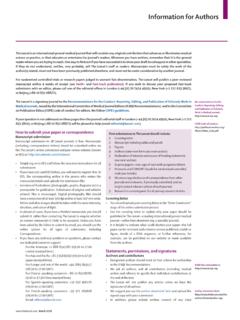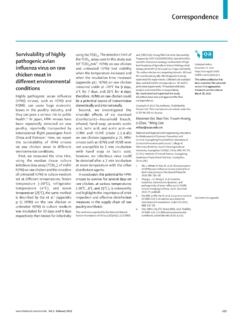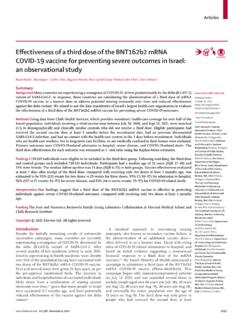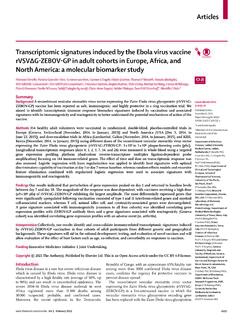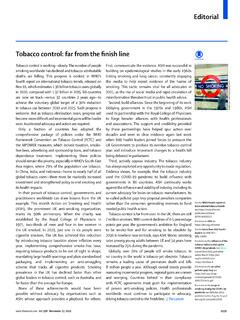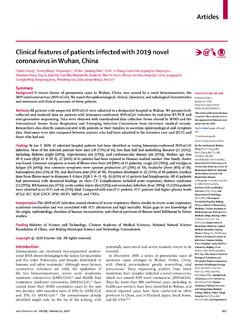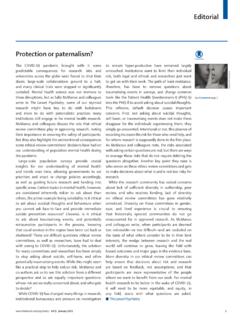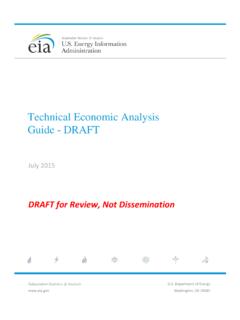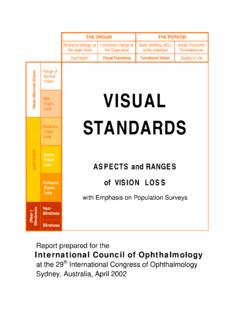Transcription of Overall fraction of disease attributable to multiple ...
1 Vol 20 December 2021 979guided by the monitoring system, not by the recording of the pressure by itself. SYNAPSE-ICU cannot answer all questions about ICP management (eg, thresholds of treatment), but it might help clinicians to select patients to monitor and suggest beneficial effects of treatment guided by ICP in more severe situations when patients are admitted to the intensive care unit. We declare no competing interests.*Giuseppe Citerio, Chiara Robba, Francesca Graziano, Paola of Medicine and Surgery, University Milano-Bicocca, 20900, Monza, Italy 1 Robba C, Graziano F, Rebora P, et al. Intracranial pressure monitoring in patients with acute brain injury in the intensive care unit (SYNAPSE-ICU): an international, prospective observational cohort study. Lancet Neurol 2021; 20: 548 Chesnut RM, Temkin N, Carney N, et al. A trial of intracranial-pressure monitoring in traumatic brain injury.
2 N Engl J Med 2012; 367: 2471 81. 3 Stocchetti N, Carbonara M, Citerio G, et al. Severe traumatic brain injury: targeted management in the intensive care unit. Lancet Neurol 2017; 16: 452 Chesnut RM. Intracranial pressure monitoring: headstone or a new head start. The BEST TRIP trial in perspective. Intensive Care Med 2013; 39: 771 only clinically and with imaging, we noted that strategies for controlling ICP were used (eg, osmotic infusions). In our opinion, these strategies are worrisome. If clinicians believe that a condition such as intracranial hypertension, which is associated with increased mortality,3 is present and they use a drug for management, ICP monitoring should be required. The use of non-invasive methods, as suggested by Chesnut, is suboptimal because of the imprecision of available approaches. Non-invasive methods could be used as a screening tool but not for continuous guidance of therapy for controlling ICP.
3 No intensivist will use a drug for increasing or decreasing arterial pressure without continuously monitoring the effects; the same should apply to ICP. Concerning the unfavourable outcome at 6 months in patients with traumatic brain injury, these could be attributable to the complexity of traumatic brain injury (eg, diffuse axonal injury or brainstem damage vs intracranial haemorrhage or subarachnoid haemorrhage).Welling and colleagues describe a real-world problem in countries with scant economic resources. The unfortunate overinterpretation of the results of the BEST TRIP trial by hospital administrators in Brazil, which led to the removal of ICP monitoring as part of the management strategy for patients with traumatic brain injury, has potentially exposed patients to the risk of undertreatment. This outcome was not the intention of the BEST TRIP trial2 and, the lead author, Chesnut, promoted a consensus for defining a stepwise approach for controlling ICP, guided by monitoring that is routinely used The verb monitor originates from the Latin word monere, which means to remind, advise, or warn.
4 Having an alarm does not change anything if the information coming from the alarm system is not inserted in a beneficial therapeutic plan. Future benefits should come from the use of therapy, Leonardo C Welling, *Nicollas Nunes Rabelo, Leonardo Luca Luciano, Eberval G Neurological Surgery Department, State University of Ponta Grossa, Ponta Grossa, Brazil (LCW); Division of Neurosurgery, School of Medicine-University of Sao Paulo (FMUSP), Sao Paulo, SP, Brazil (NNC, EGF); Hospital das Clinicas FMUSP, Sao Paulo, SP, Brazil (NNR); Federal University School of Medicine, Alfenas, Minas Gerais, Brazil (LLL)1 Brain Trauma Foundation; American Association of Neurological Surgeons; Congress of Neurological Surgeons. Guidelines for the management of severe traumatic brain injury. J Neurotrauma 2007; 24 (suppl 1): S1 106. 2 Sahuquillo J, Biestro A. Is intracranial pressure monitoring still required in the management of severe traumatic brain injury?
5 Ethical and methodological considerations on conducting clinical research in poor and low-income countries. Surg Neurol Int 2014; 5: 86. 3 Chesnut RM, Temkin N, Carney N, et al. A trial of intracranial-pressure monitoring in traumatic brain injury. N Engl J Med 2012; 367: 2471 81. 4 Robba C, Graziano F, Rebora P, et al. Intracranial pressure monitoring in patients with acute brain injury in the intensive care unit (SYNAPSE-ICU): an international, prospective observational cohort study. Lancet Neurol 2021; 20: 548 H rtl R, Stieg PE. Intracranial pressure is still number 1 despite BEST:TRIP study. World Neurosurg 2013; 79: 599 600. Authors replyWe thank Randall Chesnut and Leonardo Welling and colleagues for their comments on our Article on the SYNAPSE-ICU observational Chesnut compared the objectives and outcomes of the study with those of the BEST TRIP randomised We agree that the aims of SYNAPSE-ICU were fundamentally different to those of BEST TRIP.
6 In SYNAPSE-ICU, we described practice variation and assessed the effect of intracranial pressure (ICP) monitoring on long-term outcomes. A general question discussed daily in intensive care units is about whether to insert an ICP monitoring device after severe acute brain damage. For this reason, we did not exclude patients too severely injured a situation faced daily in the clinical setting. The decision process for inserting an ICP probe varies greatly worldwide, and economic reasons are an important consideration. In patients who were Overall fraction of disease attributable to multiple dependent risk factors: a new formulaVarious statistical methods have been developed to calculate the Overall fraction of disease that is attributable to multiple dependent risk factors. Nevertheless, the estimation of this fraction is particularly difficult when using data from the scientific literature, but complete data, which would allow the use of these statistical methods, are scarce.
7 When risk factors are independent, Miettinen s formula1 can be used (where p is the number of risk factors) to estimate the Overall attributable fraction (AF): 1 pi= [1 AF(i)].Correspondence980 Vol 20 December 2021In our formula, v(i) is the weight for risk factor i calculated from 1 mean tetrachoric correlation coefficient(i). The mean tetrachoric correlation coefficient of risk factor i is calculated from the mean of the tetrachoric correlation coefficients between risk factor i and the other risk believe that our proposed method is a step forward in the approximation of the Overall burden of disease that is attributable to multiple dependent risk factors. A comparison of results that were obtained with our formula (with complete data allowing the calculation of the true value of the Overall AF5) is provided in the table.
8 We declare no competing interests.*Isabelle Niedhammer, Jean-Fran ois University of Angers, Angers 49045, France1 Miettinen OS. Proportion of disease caused or prevented by a given exposure, trait or intervention. Am J Epidemiol 1974; 99: 325 Norton S, Matthews FE, Barnes DE, Yaffe K, Brayne C. Potential for primary prevention of Alzheimer s disease : an analysis of population-based data. Lancet Neurol 2014; 13: 788 Livingston G, Sommerlad A, Orgeta V, et al. Dementia prevention, intervention, and care. Lancet 2017; 390: 2673 Livingston G, Huntley J, Sommerlad A, et al. Dementia prevention, intervention, and care: 2020 report of the Lancet Commission. Lancet 2020; 396: 413 Ruckinger S, von Kries R, Toschke AM. An illustration of and programs estimating attributable fractions in large scale surveys considering multiple risk factors. BMC Med Res Methodol 2009; 9: Niedhammer I, Sultan-Ta eb H, Parent-Thirion A, Chastang JF.
9 Update of the fractions of cardiovascular diseases and mental disorders attributable to psychosocial work factors in Europe. Int Arch Occup Environ Health 2021; published online June 28. and colleagues2 is inadequate, as they misuse and misinterpret communality. They claimed that the communality is the proportion of the variance in each risk factor shared with the other risk factors, 2 which is incorrect. The communality is the proportion of the variance in a risk factor that is accounted for by the retained principal components (ie, linear combinations of the optimally weighted observed risk factors). Therefore, high communalities are expected in principal component analysis, and they mean that the retained components represent the risk factors well. If any communality is low, then a principal component is missing and should be retained.
10 Hence, generally the communalities should be higher than 0 5. We have developed an alternative method to estimate the weight that should be used in Norton s formula (appendix p 4). Our method, although approximate and not perfect, improves Norton s formula. The revised formula for approximate Overall AF is But when the risk factors are not independent, this formula should not be applied. Norton and colleagues2 suggested a novel approximate formula that takes the communalities of risk factors into account for Overall weighted AF, which was used by other researchers 4In their formula, w(i) is the weight for risk factor i calculated from 1 communality(i). The communality of each risk factor is calculated via a principal component analysis of the tetrachoric correlation matrix of the risk found that Norton s formula (appendix pp 3 4) underestimated Overall AFs and provided estimates that were lower than the expected minimum value.
